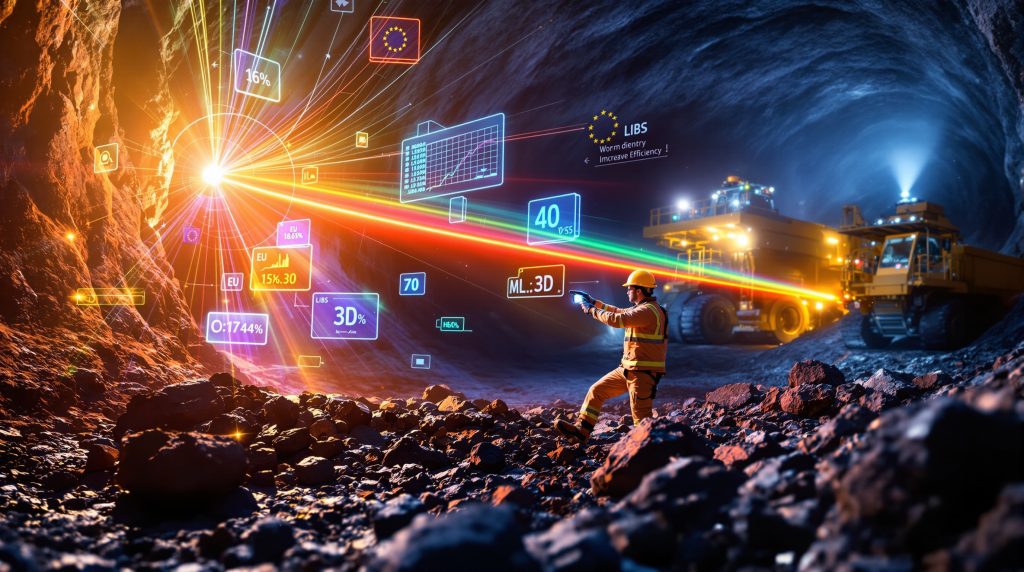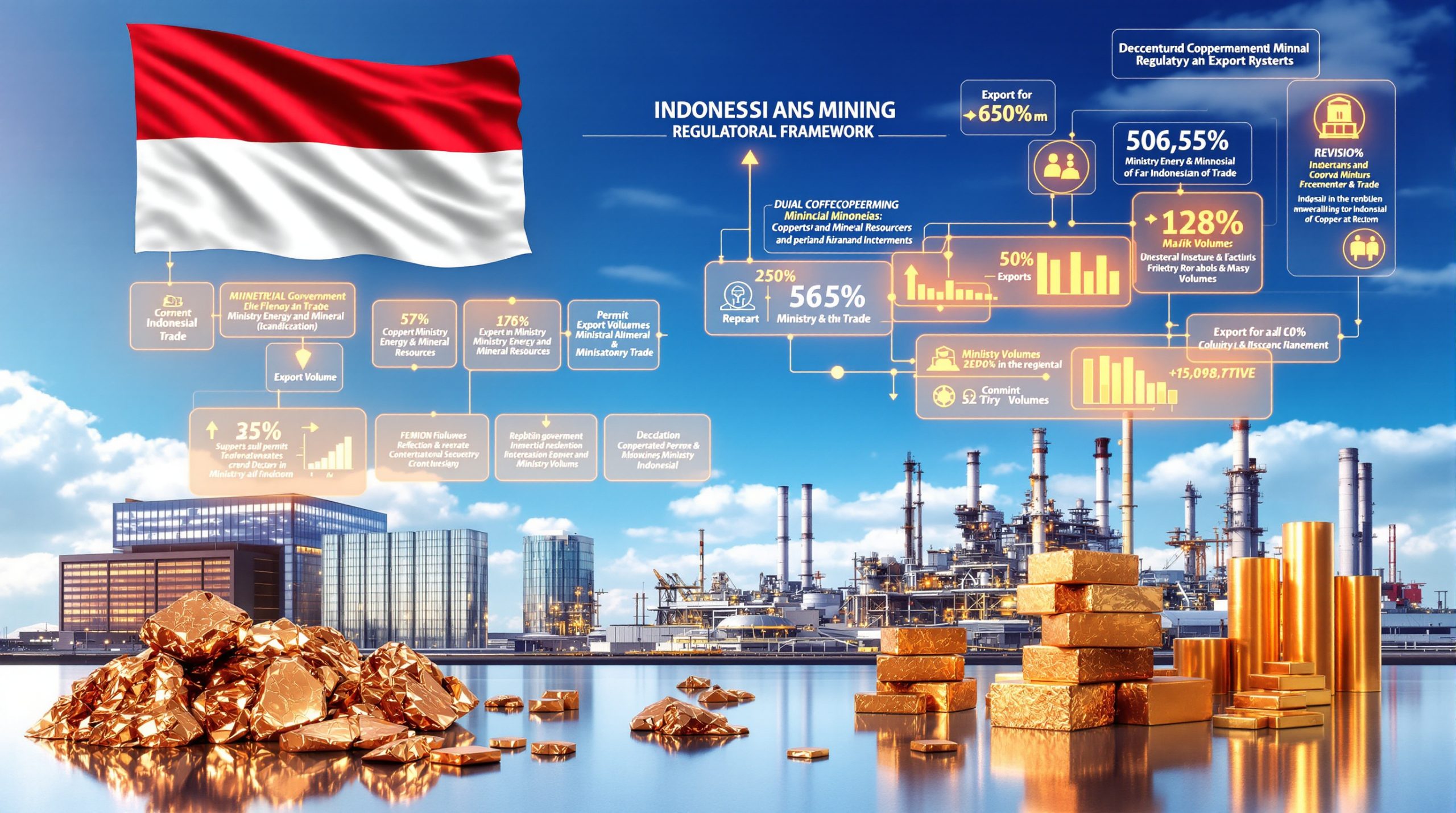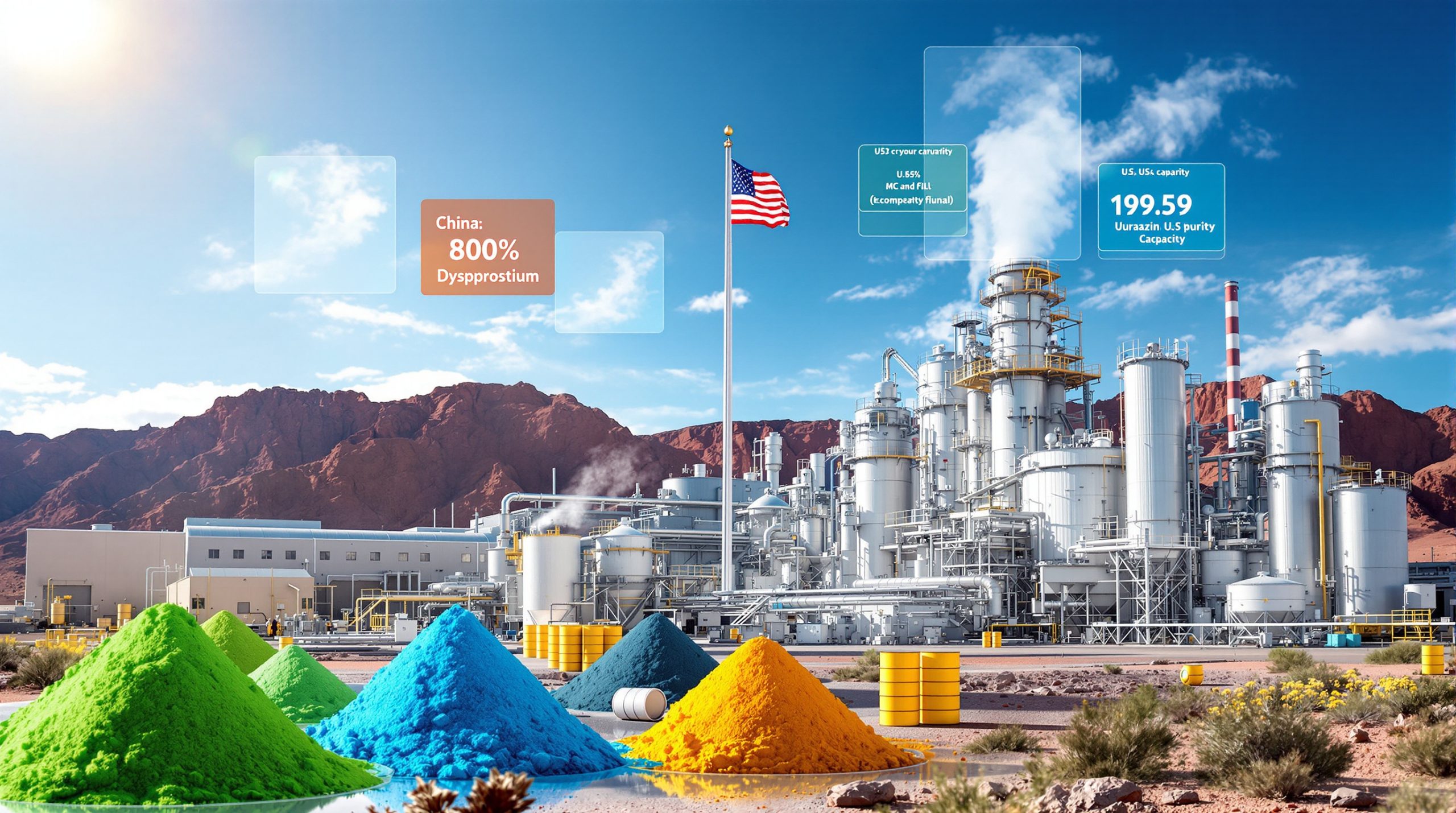LIBS Revolution in European Mining: Transforming Mineral Extraction with Real-Time Analysis
How is LIBS Technology Changing Mining Operations in Europe?
LIBS (Laser-Induced Breakdown Spectroscopy) technology is fundamentally transforming European mining operations by replacing traditional time-consuming laboratory analysis with instantaneous, on-site elemental detection. This shift enables mining companies to make data-driven mining decisions in real-time, dramatically improving operational efficiency while supporting sustainability goals within Europe's stringent regulatory environment.
The impact is particularly significant in the European mining sector, where regulatory compliance and environmental stewardship are non-negotiable priorities. By providing immediate analytical capabilities directly at mining sites, LIBS technology is closing the traditional gap between geological discovery and operational response.
The Science Behind LIBS Technology
LIBS works by focusing a high-energy laser pulse onto a sample surface, which ablates a small amount of material (typically nanograms to micrograms) and creates a transient plasma with temperatures reaching 10,000-20,000 K. This plasma emits characteristic atomic emission lines that are collected and analyzed by a spectrometer to determine elemental composition with remarkable precision.
The technology can detect elements at concentrations ranging from parts per million (ppm) to percentage levels, with typical detection limits of 1-100 ppm for most elements. This analysis typically takes just 1-10 seconds per measurement point, compared to traditional laboratory methods requiring hours to days.
A complete LIBS system includes several key components:
- Pulsed laser source (typically Nd:YAG lasers at 1064 nm or 532 nm)
- Optical focusing system
- Spectrometer (typically covering 200-900 nm wavelength range)
- Detector (CCD or ICCD camera)
- Computer for data acquisition and analysis
Applications Across the Mining Value Chain
The versatility of LIBS technology enables its application throughout the mining value chain, creating multiple points of value:
Exploration Phase: Field-portable LIBS units allow geologists to conduct immediate drill core analysis on site, accelerating the exploration process and enabling more targeted drilling campaigns. This capability is particularly valuable in remote locations where laboratory access is limited.
Resource Definition: By enabling rapid data collection, LIBS technology enhances geological modeling accuracy. Engineers can analyze hundreds of samples daily, providing a more comprehensive understanding of ore body characteristics and improving resource estimation confidence.
Production Optimization: Real-time grade control and ore sorting represent perhaps the most transformative applications of LIBS in active mining operations. By continuously analyzing material as it moves through the production process, operators can make immediate adjustments to maximize recovery and minimize waste.
Environmental Monitoring: LIBS has demonstrated capability to detect heavy metals (Pb, Cd, Hg, As, Cr) in mining areas with detection capabilities sufficient for environmental compliance monitoring. The technology can analyze soils, sediments, and dust samples without chemical preparation, providing crucial data for mine reclamation innovation.
What Operational Advantages Does LIBS Deliver to European Mines?
Revolutionizing Assay Turnaround Times
Traditional mining operations face significant delays between sample collection and receiving laboratory results, often waiting days or weeks for critical data. This lag creates a disconnect between geological reality and operational decision-making, forcing mine geologists and engineers to work with outdated information.
The consequences of this delay are far-reaching:
- Suboptimal blast patterns and mining sequences
- Diluted ore grades entering the processing plant
- Inefficient resource allocation and equipment utilization
- Reactive rather than proactive operational management
LIBS technology eliminates this delay by providing immediate analytical results directly at the point of extraction. This compression of the decision-making cycle from weeks to minutes enables a level of operational agility previously unattainable in mining operations.
| Traditional Analysis | LIBS Analysis |
|---|---|
| 1-3 days for ICP-MS | Results in seconds |
| Sample transport required | On-site analysis |
| Batch processing | Continuous analysis |
| Static mine planning | Dynamic optimization |
| Reactive decision-making | Proactive management |
Transforming Grade Control and Ore Sorting
LIBS technology enables precise separation of valuable ore from waste material through real-time elemental analysis. Modern sensor-based ore sorting systems equipped with LIBS can process 100-300 tons per hour, with sensors capable of analyzing multiple points on each rock fragment as it passes on a conveyor belt at speeds up to 3 meters per second.
This capability delivers multiple operational benefits:
Higher Mill Feed Grade: By ensuring only valuable material enters processing, LIBS-enabled sorting systems significantly improve the grade of ore delivered to the processing plant. This concentration effect means more metal can be produced from the same mining footprint.
Reduced Processing Costs: When higher-grade material enters the plant, less energy and fewer reagents are required per ton of metal produced. Processing plants operate more efficiently with consistent, high-quality feed material.
Increased Recovery Rates: More efficient extraction of target minerals becomes possible when processing plants can be optimized for a narrower range of ore characteristics rather than accommodating widely varying feed material.
Lower Waste Volumes: By rejecting waste rock before it enters the processing circuit, LIBS-enabled sorting minimizes tailings generation and storage requirements, addressing one of mining's most significant environmental challenges.
Optimized Hauling: When waste material can be identified and separated at the earliest possible stage, mines avoid the unnecessary cost and environmental impact of transporting valueless rock to processing facilities.
How Does LIBS Support Europe's Sustainability Goals?
Enhancing Environmental Stewardship
European mining companies face some of the world's most stringent environmental regulations, including:
- EU Mining Waste Directive (2006/21/EC)
- EU Water Framework Directive (2000/60/EC)
- EU Industrial Emissions Directive (2010/75/EU)
LIBS technology provides the data necessary to meet and exceed these requirements through several key mechanisms:
Selective Waste Management: Rapid identification of potentially harmful elements enables proactive waste management strategies. By characterizing waste rock before placement, operators can implement appropriate handling protocols for materials containing elevated levels of potentially harmful elements.
Acid Rock Drainage Prevention: Research indicates that rapid identification of sulfide-bearing minerals through on-site analysis enables proactive segregation of potentially acid-generating materials, which is critical for long-term environmental management. The ability to classify waste rock based on its acid-generating potential before placement can significantly reduce future remediation costs.
Water Conservation: By reducing the volume of material requiring wet processing, LIBS-enabled ore sorting directly contributes to water conservation efforts. Processing plants operate more efficiently with higher-grade feed, requiring less water per unit of metal produced.
Energy Efficiency: Higher-grade mill feed translates directly to lower energy consumption per ton of metal produced. This efficiency gain supports Europe's ambitious carbon reduction targets while simultaneously reducing operational costs.
Carbon Footprint Reduction: The cumulative effect of processing less waste material, optimizing haulage routes, and improving energy efficiency results in a meaningful reduction in the overall carbon footprint of mining operations.
Strengthening ESG Compliance
The detailed, real-time data provided by LIBS supports comprehensive ESG reporting and performance through:
Environmental Impact Measurement: LIBS provides quantifiable data on resource efficiency, waste characterization, and processing optimization, enabling transparent reporting of environmental performance metrics.
Regulatory Documentation: The technology generates verifiable records of waste characterization and environmental monitoring, streamlining compliance documentation and reducing regulatory risk.
Stakeholder Transparency: Evidence-based reporting on environmental management builds trust with local communities, NGOs, and government agencies, protecting the social license to operate.
Risk Mitigation: Early identification of potential environmental concerns enables proactive management, reducing the likelihood of environmental incidents that could damage reputation and trigger regulatory penalties.
Social License Maintenance: Demonstrating commitment to responsible mining practices through advanced environmental monitoring and waste management helps maintain community support for mining operations.
What Economic Benefits Does LIBS Bring to European Mining?
Financial Advantages of Real-Time Analysis
The implementation of LIBS technology delivers significant economic benefits throughout the mining value chain:
Reduced Operational Costs: By enabling more precise ore sorting and grade control, LIBS technology helps mines minimize the processing of waste material, directly reducing energy, water, and reagent consumption.
Higher Metal Recovery: Improved understanding of ore characteristics and more consistent mill feed leads to optimized processing parameters and higher recovery rates of target metals.
Accelerated Project Timelines: Faster resource definition and mine planning enabled by rapid, on-site analysis can significantly compress project development schedules, improving net present value and investment returns.
Lower Capital Requirements: When higher-grade material can be consistently delivered to processing facilities, smaller and more capital-efficient plants can be designed, reducing initial investment requirements.
Extended Mine Life: More efficient resource utilization preserves reserves and can extend mine life by making previously uneconomic material viable through better sorting and processing optimization.
The initial investment for LIBS technology varies by application and scale:
- Portable LIBS systems: approximately €50,000-€150,000 per unit
- Industrial conveyor-mounted systems: €300,000-€1,000,000+ depending on configuration
- Installation and integration costs: typically 20-40% of equipment cost
Competitive Positioning in Global Markets
European mining operations using LIBS gain competitive advantages in several key areas:
Premium Product Quality: More consistent mineral concentrate specifications result from better understanding and control of the feed material entering processing circuits, potentially commanding premium pricing in tight commodity markets.
Supply Chain Reliability: Better production forecasting and quality control enabled by real-time analysis improves the reliability of supply, an increasingly important factor for downstream customers concerned about supply chain resilience.
Regulatory Compliance: Easier adherence to Europe's strict environmental standards through better waste characterization and management reduces compliance costs and regulatory risks.
Market Responsiveness: The ability to adjust production based on real-time data allows mining operations to more quickly respond to changing market conditions and customer requirements.
Investor Confidence: Demonstrated commitment to technological innovation and sustainability aligns with the ESG priorities of modern investors, potentially improving access to capital and reducing financing costs.
How is LIBS Reshaping European Critical Minerals Strategy?
Supporting Domestic Resource Development
The European Commission's Critical Raw Materials Act identifies 34 critical raw materials essential for Europe's industrial future, including lithium, rare earth elements, cobalt, graphite, copper, and nickel. By 2030, the EU aims to:
- Extract at least 10% of its annual consumption of strategic raw materials within the EU
- Process at least 40% of its annual consumption within the EU
- Recycle at least 25% of its annual consumption
LIBS technology is particularly valuable for Europe's push to secure critical mineral supplies:
Lithium Detection: Research demonstrates that LIBS can detect lithium with detection limits in the range of 1-10 ppm in rock samples, making it suitable for lithium exploration and resource characterization. This capability is especially important for pegmatite-hosted lithium deposits common in European locations such as Portugal, Finland, Austria, and Spain.
Rare Earth Element Analysis: LIBS has demonstrated capability to detect rare earth elements (REEs) in geological samples. While matrix effects and spectral interferences can complicate quantitative analysis, recent advances in chemometric data processing have improved REE quantification accuracy.
Copper and Nickel Optimization: These metals, essential for electrification and the energy transition, benefit from improved grade control and processing optimization enabled by LIBS technology.
Cobalt Identification: As a critical battery metal with limited European sources, maximizing the recovery of cobalt from existing operations through better detection and processing is strategically important.
Graphite Characterization: LIBS analysis helps characterize natural graphite deposits, enabling better quality control for this essential battery material.
Strategic Importance for European Industrial Policy
The LIBS revolution aligns with broader European industrial strategy in several key ways:
Supply Chain Resilience: By enabling more efficient extraction of domestic resources, LIBS technology helps reduce Europe's dependence on imported critical minerals, addressing a key strategic vulnerability.
Green Transition Support: More efficient production of materials needed for renewable energy infrastructure and electric vehicles supports Europe's ambitious climate goals while creating sustainable industrial employment.
Circular Economy Enhancement: Better characterization of recyclable materials improves the efficiency of urban mining and secondary resource recovery, supporting circular economy objectives.
Industrial Competitiveness: Maintaining technological leadership in mining practices helps preserve Europe's industrial competitiveness in a globally challenging sector.
Energy Security: Supporting domestic production of energy transition minerals reduces dependence on imports from regions with potentially unstable geopolitical situations.
What Challenges Must Be Addressed for Widespread LIBS Adoption?
Technical and Implementation Hurdles
Despite its advantages, LIBS technology faces several adoption challenges:
Calibration Requirements: Research literature consistently identifies matrix effects as a primary challenge for quantitative LIBS analysis in geological applications. Matrix-matched standards (reference materials with similar composition to the samples being analyzed) are essential for accurate calibration. The development of appropriate certified reference materials for specific ore types remains an ongoing challenge.
Integration Complexity: Mine planning software systems such as Surpac, Vulcan, or Datamine require standardized data formats. Integration of high-frequency LIBS data streams into these systems necessitates data validation protocols, QA/QC procedures, database management systems capable of handling large datasets, and automated data processing pipelines.
Training Needs: Developing workforce skills for operating and interpreting LIBS systems requires investment in specialized training programs and potentially new roles within mining organizations.
Initial Investment: The high upfront costs for equipment and implementation can present a barrier, particularly for smaller mining operations with limited capital budgets.
Data Management: The volume of information generated by continuous analysis creates data management challenges that require robust digital infrastructure and specialized expertise to address effectively.
Regulatory and Standardization Considerations
The European mining sector must address regulatory aspects of LIBS implementation:
Method Validation: Establishing LIBS as an accepted analytical technique for compliance reporting requires validation against established methods and regulatory acceptance.
Quality Assurance Protocols: Developing standards for LIBS data reliability ensures consistent results across different operations and applications.
Cross-Border Standardization: Harmonizing LIBS implementation across EU member states reduces compliance complexity for companies operating in multiple jurisdictions.
Certification Frameworks: Creating recognized qualifications for LIBS operators establishes professional standards and ensures competency.
Reference Materials: Establishing common standards for calibration across the industry improves data comparability and reliability.
Currently, no comprehensive EU-wide standardization frameworks for LIBS in mining have been established. The development of such standards represents an important opportunity for industry collaboration and regulatory engagement.
How Will LIBS Shape the Future of European Mining?
Emerging Trends and Innovations
The evolution of LIBS technology continues to open new possibilities:
AI Integration: Research publications from 2020-2024 demonstrate that machine learning algorithms (particularly artificial neural networks and support vector machines) can improve LIBS spectral interpretation accuracy by 10-30% compared to traditional calibration methods. These algorithms can identify patterns in spectral data that might be missed by conventional analysis.
Automated Mining Systems: LIBS sensors guiding autonomous equipment represent a convergence of technologies that could significantly enhance AI-powered mining efficiency. Real-time mineral identification enables smart decision-making by robotic mining systems.
Drone-Mounted Systems: While the concept of aerial LIBS platforms is discussed in research literature, practical implementation for mining exploration remains largely experimental as of 2024. Standoff LIBS measurements from distances greater than 10 meters face significant challenges related to signal intensity and atmospheric interference.
Miniaturization: Recent developments have produced handheld LIBS analyzers weighing less than 3 kg, compared to early laboratory systems weighing 50+ kg. These portable systems maintain analytical performance comparable to laboratory instruments for many applications, enabling new use cases throughout mining operations.
Multi-sensor Fusion: Combining LIBS with other analytical technologies such as near-infrared spectroscopy or X-ray fluorescence creates complementary datasets that provide more comprehensive material characterization than any single technology could deliver.
Long-term Industry Transformation
LIBS is catalyzing fundamental changes in how European mining operates:
Digital Twin Development: Real-time LIBS data contributes to the creation of comprehensive virtual models of ore bodies, enabling more sophisticated planning and optimization.
Predictive Analytics: The wealth of data generated by continuous LIBS analysis supports the development of predictive models that can anticipate geological variations before extraction, further enhancing operational efficiency.
Just-in-Time Mining: The ability to precisely characterize material in real-time enables extraction based on immediate market demand, optimizing inventory management and capital utilization.
Continuous Improvement Cycles: Shorter feedback loops for operational optimization drive ongoing performance enhancement and adaptation to changing conditions.
Knowledge-Based Mining: The LIBS revolution is part of a broader shift from volume-based to intelligence-driven extraction, where value is created through information as much as through physical production.
FAQ: LIBS Technology in European Mining
What makes LIBS particularly suitable for European mining operations?
LIBS technology aligns perfectly with Europe's strict environmental regulations and sustainability goals by enabling precise resource utilization, minimizing waste generation, and providing detailed documentation for compliance reporting. The technology's ability to deliver real-time data supports the agile decision-making needed to operate profitably within Europe's regulatory framework.
European mining faces unique challenges: strict environmental regulations, high operating costs, and complex stakeholder expectations. LIBS addresses these challenges by providing the data needed to maximize efficiency while demonstrating responsible resource stewardship. The technology's ability to improve selectivity in mining and processing directly supports the EU's goals of resource efficiency and circular economy principles.
How does LIBS compare to traditional laboratory analysis methods?
While traditional laboratory methods like ICP-MS may offer higher sensitivity for certain elements, LIBS provides immediate results directly at the mining site without sample preparation or chemical processing. This speed advantage transforms operational efficiency, allowing mining companies to make adjustments in real-time rather than waiting days or weeks for laboratory results.
Traditional methods like ICP-MS typically have detection limits in the low ppb (parts per billion) range for many elements, compared to LIBS detection limits typically in the low ppm (parts per million) range. However, the operational value of immediate results often outweighs the need for extreme sensitivity in many mining applications. LIBS also excels at detecting light elements like lithium, beryllium, and boron, which can be challenging for some other analytical techniques.
Can LIBS technology detect all elements relevant to mining operations?
LIBS can detect most elements in the periodic table, including light elements that are challenging for some other analytical methods. However, sensitivity varies by element, and some trace elements may require specialized calibration. The technology is particularly effective for major and minor elements that drive most mining decisions.
Elements like lithium, beryllium, carbon, and boron—often challenging for other field-portable technologies—are readily detectable by LIBS. However, elements with emission lines in the vacuum UV region (below 200 nm) such as chlorine and fluorine present challenges for standard LIBS configurations. For many mining applications, the ability to detect and quantify the economically significant elements (copper, nickel, iron, zinc, etc.) and potentially harmful elements (arsenic, lead, mercury, etc.) provides the critical information needed for operational decision-making.
How is LIBS data integrated with existing mine planning software?
Modern LIBS systems feature API connections that allow seamless data transfer to common mine planning and resource modeling software. This integration enables real-time updates to geological models, production schedules, and grade control plans. Some European mining companies have developed custom middleware to facilitate this data flow and ensure consistent formats.
The integration process typically involves:
- Data validation and quality control protocols
- Spatial registration of LIBS measurements
- Database management systems for storing and accessing analytical results
- Visualization tools for interpreting spatial patterns
- Decision support systems for translating analytical results into operational actions
These integrated systems transform LIBS from a simple analytical tool into a comprehensive mining intelligence platform.
Case Studies: LIBS Success Stories in European Mining
While specific case studies with detailed metrics require verification from mining operations or published technical reports, the general application patterns of LIBS in European mining demonstrate its transformative potential across various contexts:
Enhanced Exploration Efficiency
Advanced exploration projects across Europe are increasingly deploying portable LIBS systems to accelerate the analysis of drill core and chip samples. This approach enables geologists to make real-time decisions about drilling directions and priorities, maximizing the value of expensive drilling campaigns. The immediate feedback on mineralization guides more targeted exploration, reducing the number of holes required to define a resource.
Improved Processing Plant Performance
Processing facilities using LIBS-guided ore sorting report significant improvements in mill feed grade and processing efficiency. By removing waste rock before it enters the processing circuit, these operations reduce energy consumption, reagent usage, and water consumption while maintaining or increasing metal output. The more consistent feed material also enables finer optimization of processing parameters, further enhancing recovery rates.
Enhanced Environmental Management
European mines operating in environmentally sensitive areas use LIBS technology to monitor and manage potential contaminants. By characterizing waste material before placement, these operations can implement appropriate handling protocols for materials with elevated concentrations of potentially harmful elements. This proactive approach reduces long-term environmental risks and associated liabilities.
Conclusion: The Transformative Impact of LIBS on European Mining
The LIBS revolution represents more than just an incremental improvement in mining technology—it marks a fundamental shift in how European mining operations conceptualize and execute mineral extraction. By collapsing the traditional time gap between geological discovery and operational response, LIBS enables a new paradigm of data-driven, environmentally responsible mining that aligns perfectly with Europe's dual priorities of resource security and sustainability.
As the technology continues to mature and integrate with complementary innovations like artificial intelligence, automation, and digital twins, its transformative potential will only increase. European mining companies that embrace this revolution position themselves not only for improved profitability but also for leadership in the global transition to more sustainable resource extraction practices.
The ultimate value of LIBS lies in its ability to transform raw data into actionable intelligence at the point of extraction, enabling mining operations to make better decisions faster. This capability is proving essential for navigating the complex challenges facing mining industry innovation, from securing critical mineral supplies to meeting stringent environmental standards while maintaining economic viability.
Further Exploration:
Readers interested in learning more about innovations in mining technology can explore related educational content from Metals Mining Review Europe, which offers additional perspectives on technological advancements in the European mining sector. Additionally, those looking to understand the specific implications for lithium mining may find value in research regarding contested lithium futures in emerging European mining regions, which highlights how mining decarbonisation benefits can be realized through advanced technologies like LIBS.
Want to Catch the Next Major Mineral Discovery?
Discovery Alert's proprietary Discovery IQ model delivers instant notifications on significant ASX mineral discoveries, helping investors identify actionable opportunities before the broader market. Learn why historic discoveries can generate substantial returns by visiting Discovery Alert's dedicated discoveries page and position yourself ahead of the market.




